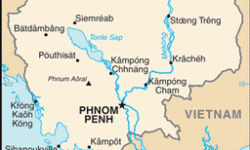Crime and Conflict: Temple Looting in Cambodia
Davis, T. and Mackenzie, S. (2014) ‘Crime and Conflict: Temple Looting in Cambodia’. In J. Kila and M. Balcells (eds) Cultural Property Crimes: an overview and analysis on contemporary perspectives and trends (Brill: Leiden) 292–306.
As we are seeing now with the “Arab Spring,” and have seen throughout history, cultural destruction is often a handmaiden to conflict. In the Southeast Asian nation of Cambodia, fijighting erupted between government forces and the communist Khmer Rouge in 1970 and did not end until the 1998 death of Pol Pot and subsequent surrender of his remaining forces. While contemporary accounts and photographs confirm the country’s ancient Hindu and Buddhist temples were largely intact before the war, most were then cut off from the outside world for decades, and some remain difficult and even dangerous to reach today due to poor roads, jungles, landmines, and unexploded ordnance (uxo). It is thus only now becoming possible to systematically investigate the wartime plunder of Cambodia’s antiquities, an undertaking that is growing more important each year as the country steps up efforts to recover its stolen treasures from overseas collections.
Cambodia is internationally celebrated for the twelfth-century ruins of Angkor Wat, the crowning achievement of the Khmer Empire, which ruled much of Southeast Asia from the ninth to fijifteenth centuries. But this temple— said to be the largest religious monument in the world—is just one of many in the country. While only the size of the us state of Oklahoma, Cambodia boasts 4,000 known prehistoric and historic sites, with more discovered each year (mocfa, 2013). But despite a long tradition of archaeology dating back to the French colonial era (1867–1953), only a fraction has been thoroughly surveyed, and even fewer scientifically excavated. So when looters reach them first, the only evidence of theft is often an empty hole in the ground, or an empty space on a temple wall. Calculating how many antiquities have been stolen and their value is thus very difficult.
Book available here.

